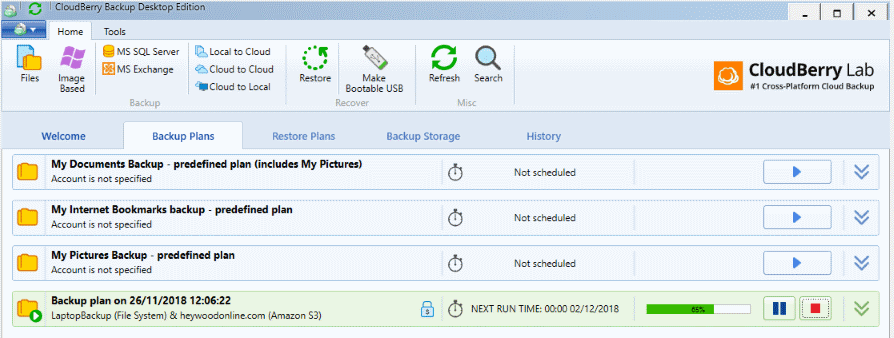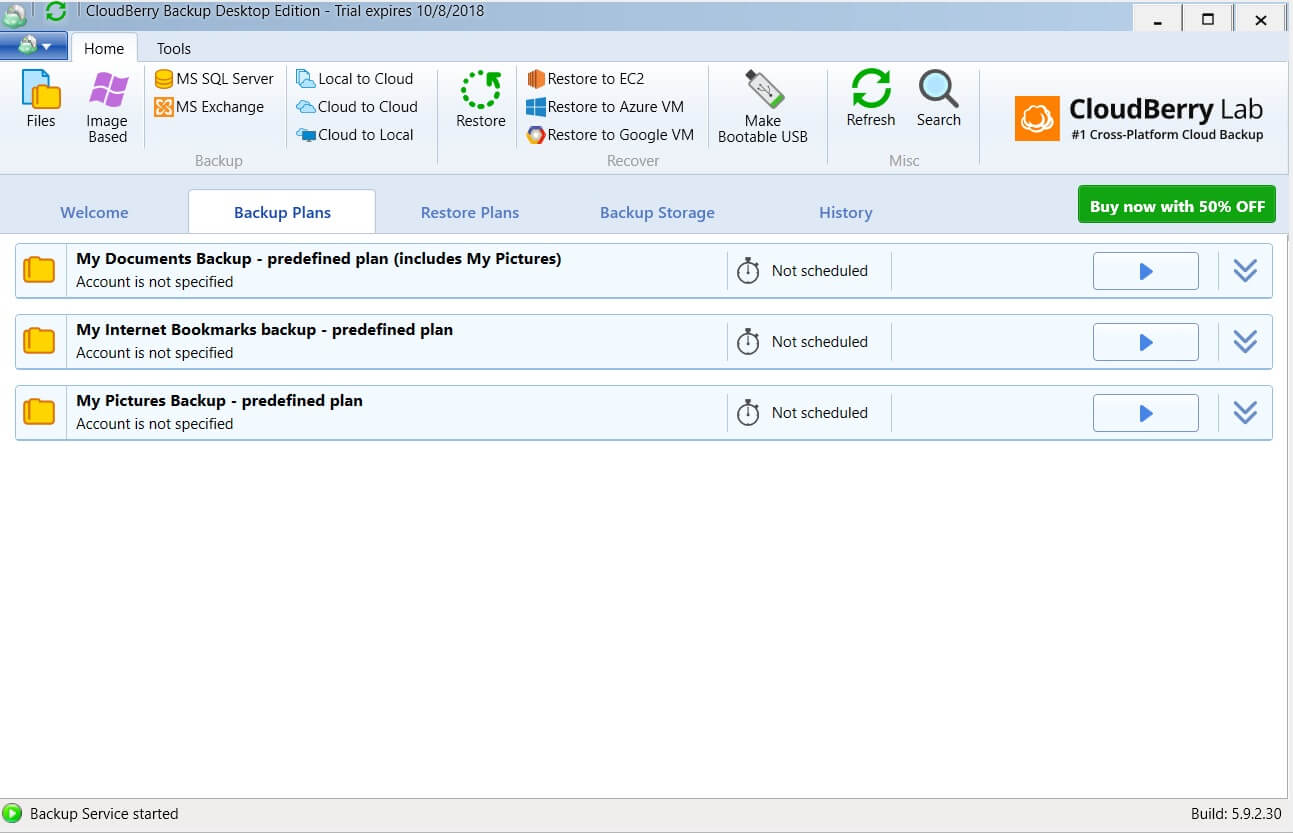

- #Cloudberry backup desktop how to#
- #Cloudberry backup desktop full#
- #Cloudberry backup desktop pro#
- #Cloudberry backup desktop password#

(Server backup is similar but a separate product.) Back then it was called CloudBerry Online Backup, it’s now called Windows Desktop Cloud Backup.
#Cloudberry backup desktop pro#
You can use it with a Freeware license, if your project is small, or you can buy an affordable Pro license.It has been a few years since my first look at CloudBerry Backup. However, besides providing many unique features such as block-level backup, multiple backup plans, flexible retention policies, and compatibility with all popular cloud storage providers, CloudBerry Backup gives you an option to manage your server backup with a simple but powerful web interface. So, for more details read that post where I created a backup and restore plans with Google Cloud Storage, and I reviewed all the settings of CloudBerry Backup.ĬloudBerry Backup for Linux is proprietary software, and of course, you can use some open-source solutions instead. Final thoughtsĪll other options available in this web interface are similar to what you would see in the desktop app I reviewed previously. In the end, check the summary and run the backup:Īfter the backup has finished, you can see the summary in the web interface, in your email (including a link to the detailed report), and you can, of course, check all the backed up files in your cloud storage. In the latest version of CloudBerry Backup, you can also request a backup report: I think this is essential for a server user. This ensures the integrity of your backup data.įinally, activate the email notification. So, everything will be backed up, not only the differences as during the block-level backup.
#Cloudberry backup desktop full#
CloudBerryLab recommends making a full backup from time to time.

Then define the schedule for the full backup. Next, define how many backups you want to create and for how long to keep them:ĭefine the schedule of the block-level backup: Be careful because some of these non-default options like Amazon S3 Transfer acceleration may cost you some extra fee: There may also be some storage-depending settings like Amazon S3 in my case. Unfortunately, these options are not available in the free version. On the next page, you can enable compression and encryption if you use a Pro license. For example, I usually back up empty folders to keep my home folder structure: I usually backup my /home and exclude such folders as ~/.cache, Downloads, etc.: On the next page, select what folders to include in the backup and what folders to exclude from the backup. To create a new one, click on the add sign, give it a name and select the location:Īfter you have created the storage, select it and proceed. Next, you can select an existing bucket from this drop-down menu or create a new one. You can download your Amazon S3 keys from by clicking on My Security Credentials in the Amazon Console, then Access Keys and Create New Access Keys: Name this storage and paste your Amazon keys: There are many options, I will use Amazon S3: This is one of the unique features of CloudBerry Backup. So, you save your bandwidth and reduce the backup time. Block-level backup allows you to back up only modified parts of the files instead of running a full backup every time a file is changed. I also recommend activating the block-level backup. You click Create New, and give a name to this Backup plan:
#Cloudberry backup desktop how to#
To give you an idea of how the CloudBerry Backup Web interface works, I show how to create a backup plan with Amazon S3 storage.
#Cloudberry backup desktop password#
Use your server username and password to log in and start configuring CloudBerry Backup for Linux on your server with this nice interface: If you use Firefox, click Advanced → Accept Risk and Continue. If you get a warning of potential security risk from your browser, it is fine to proceed. You should see the log-in page for CloudBerry Backup.


 0 kommentar(er)
0 kommentar(er)
